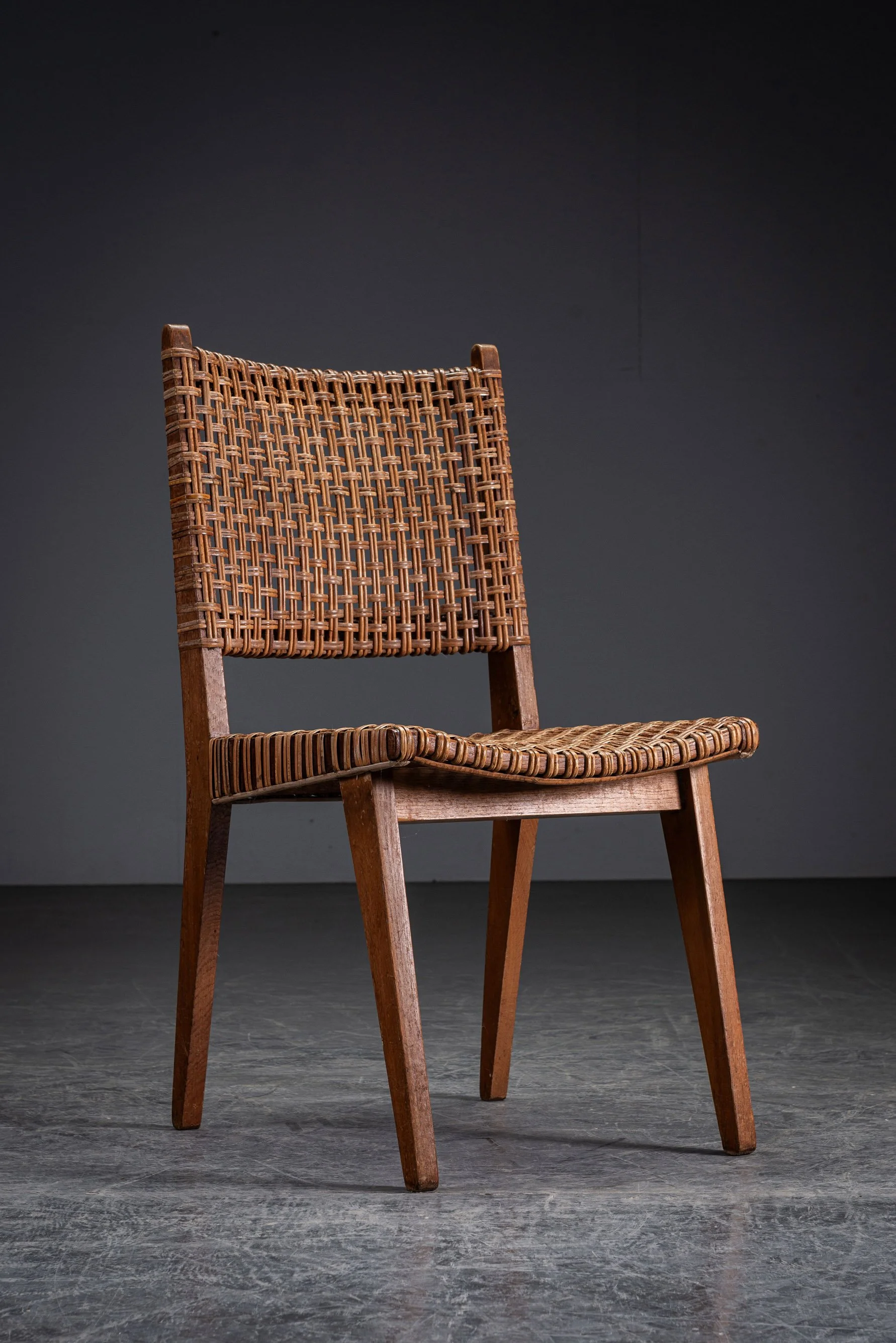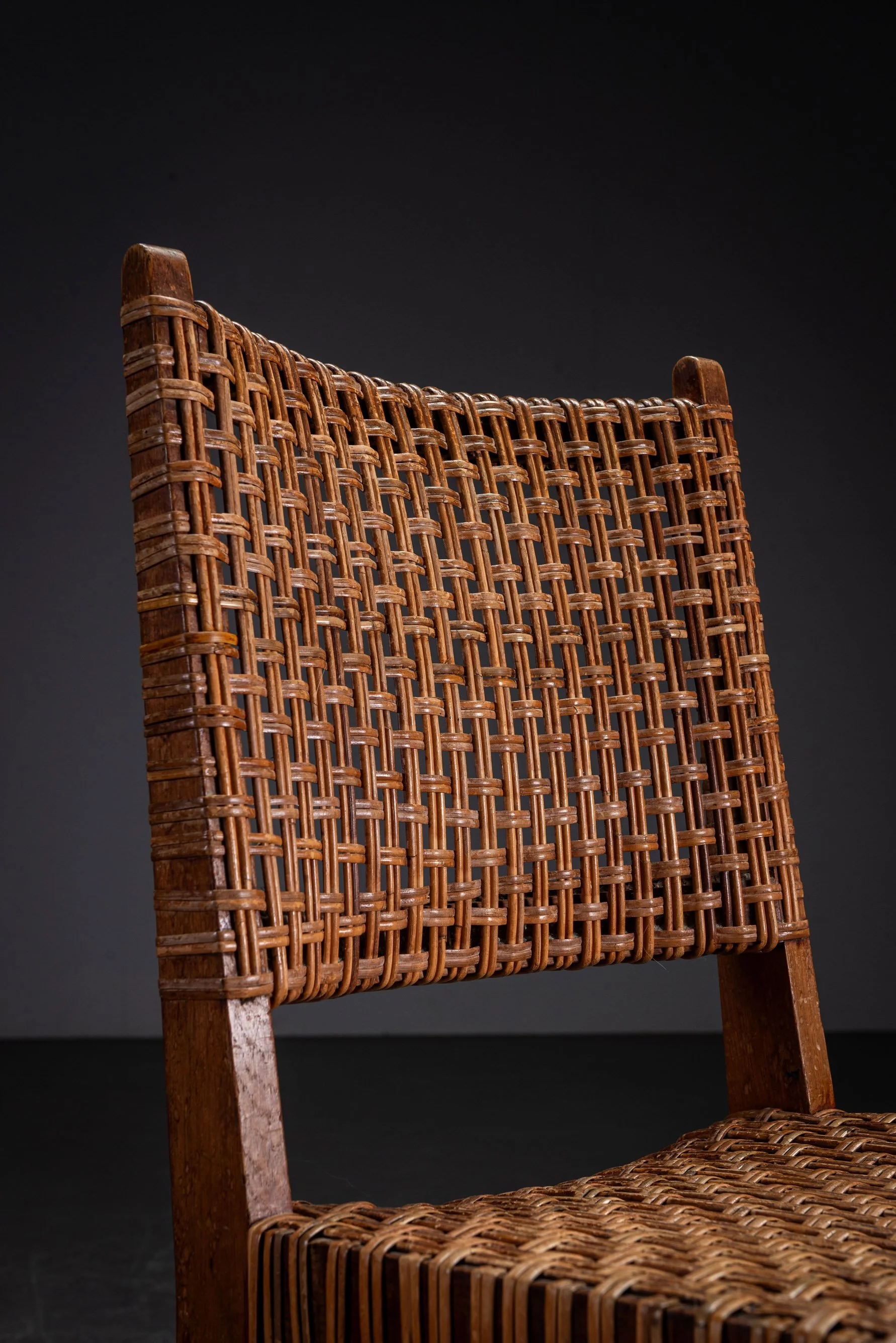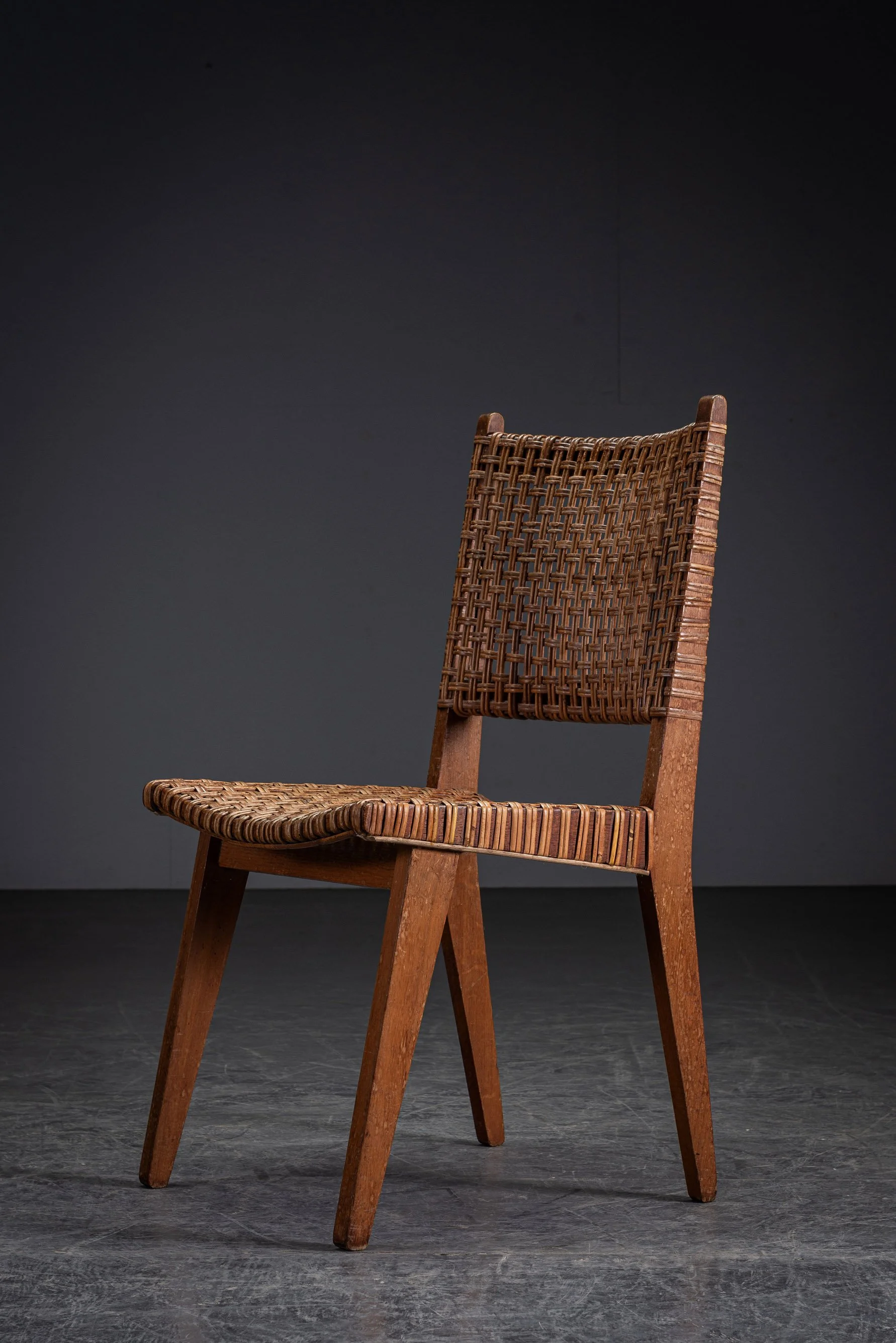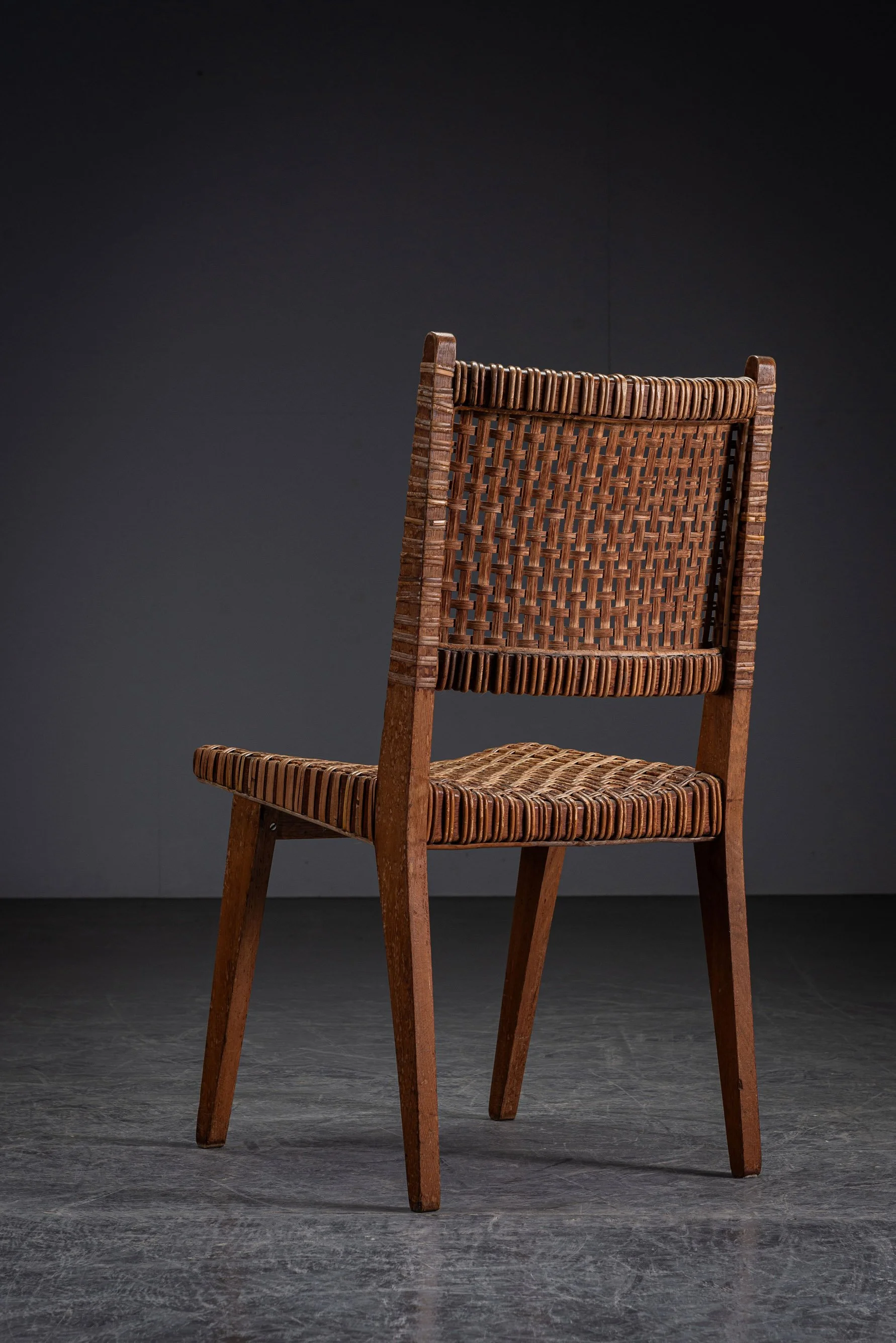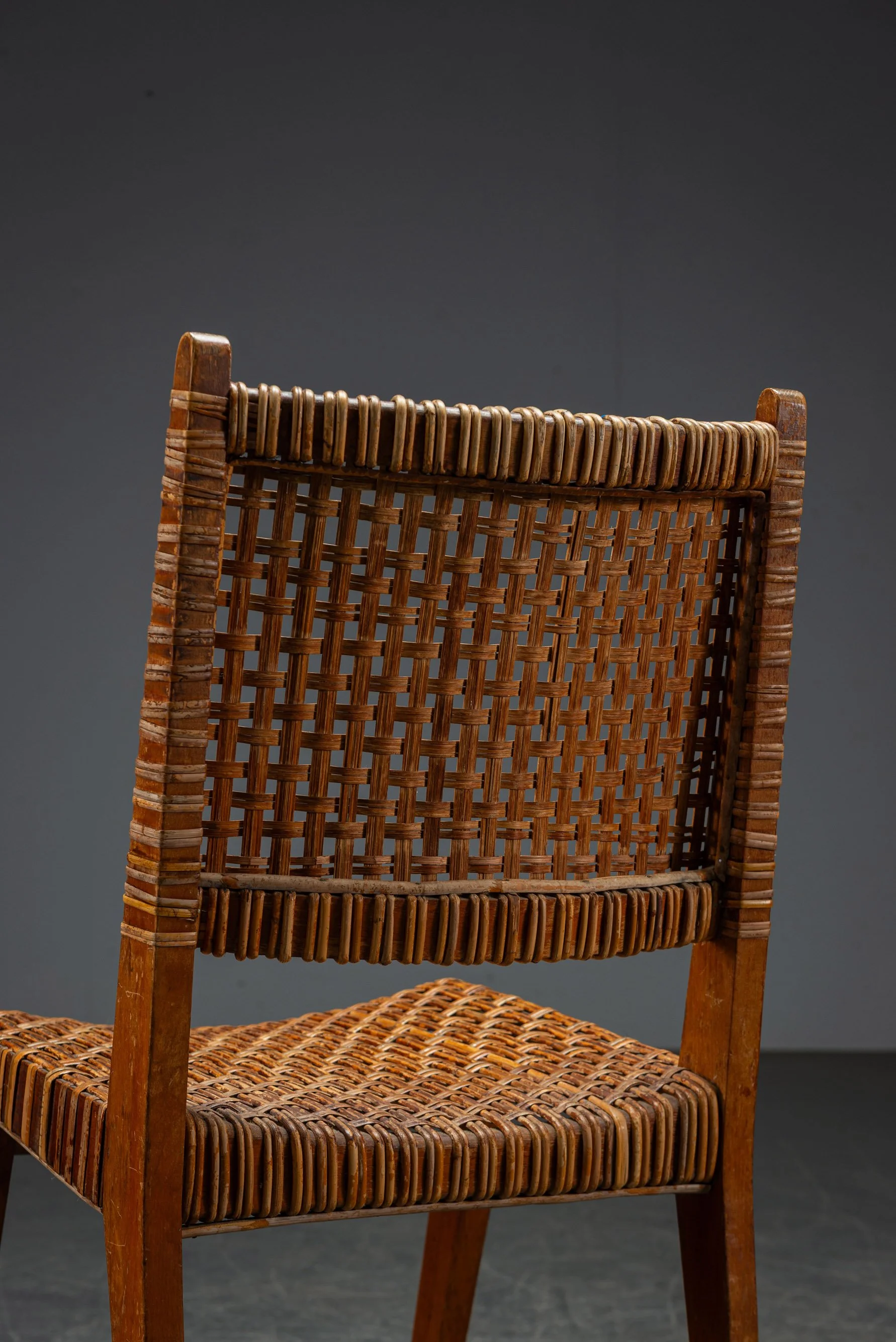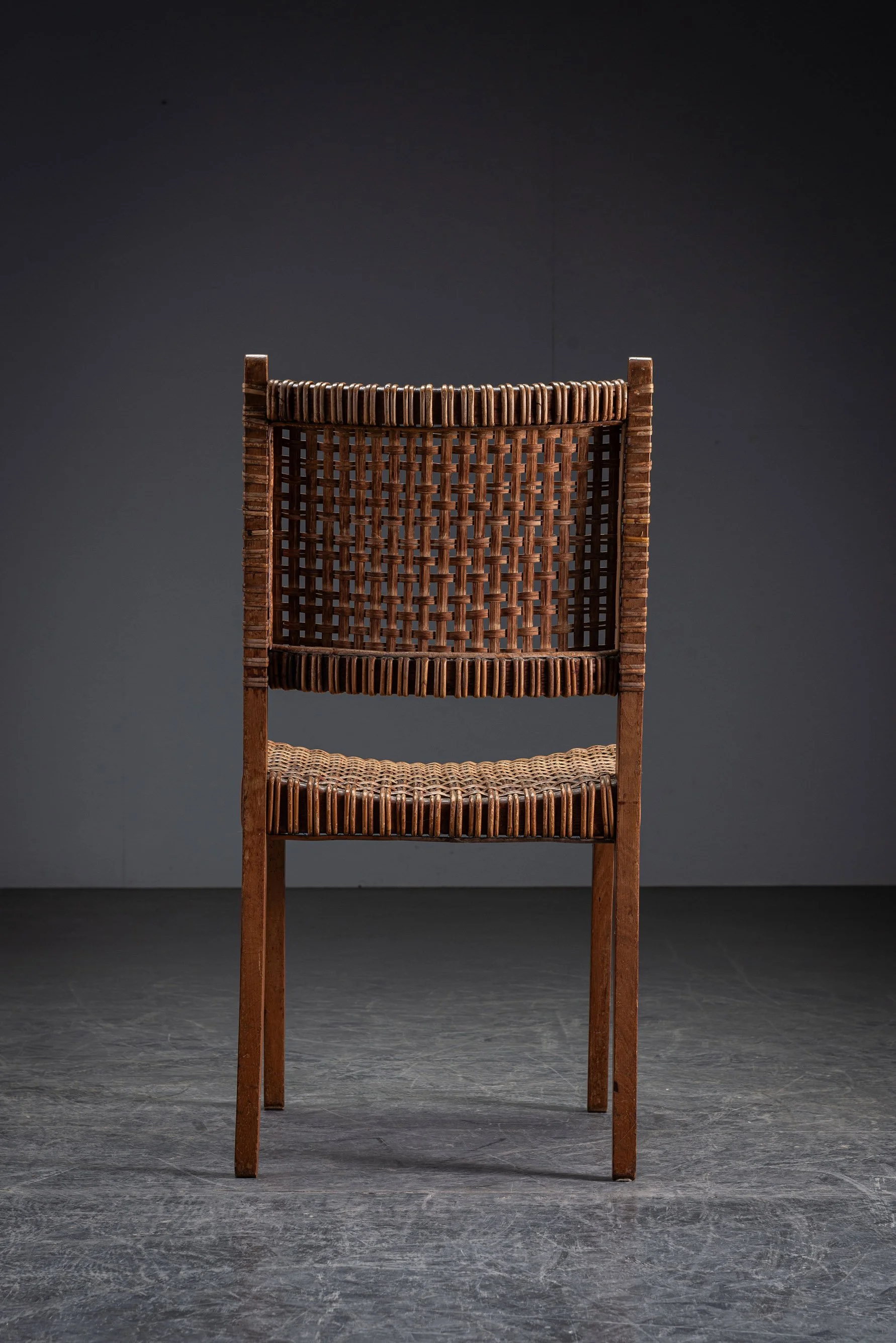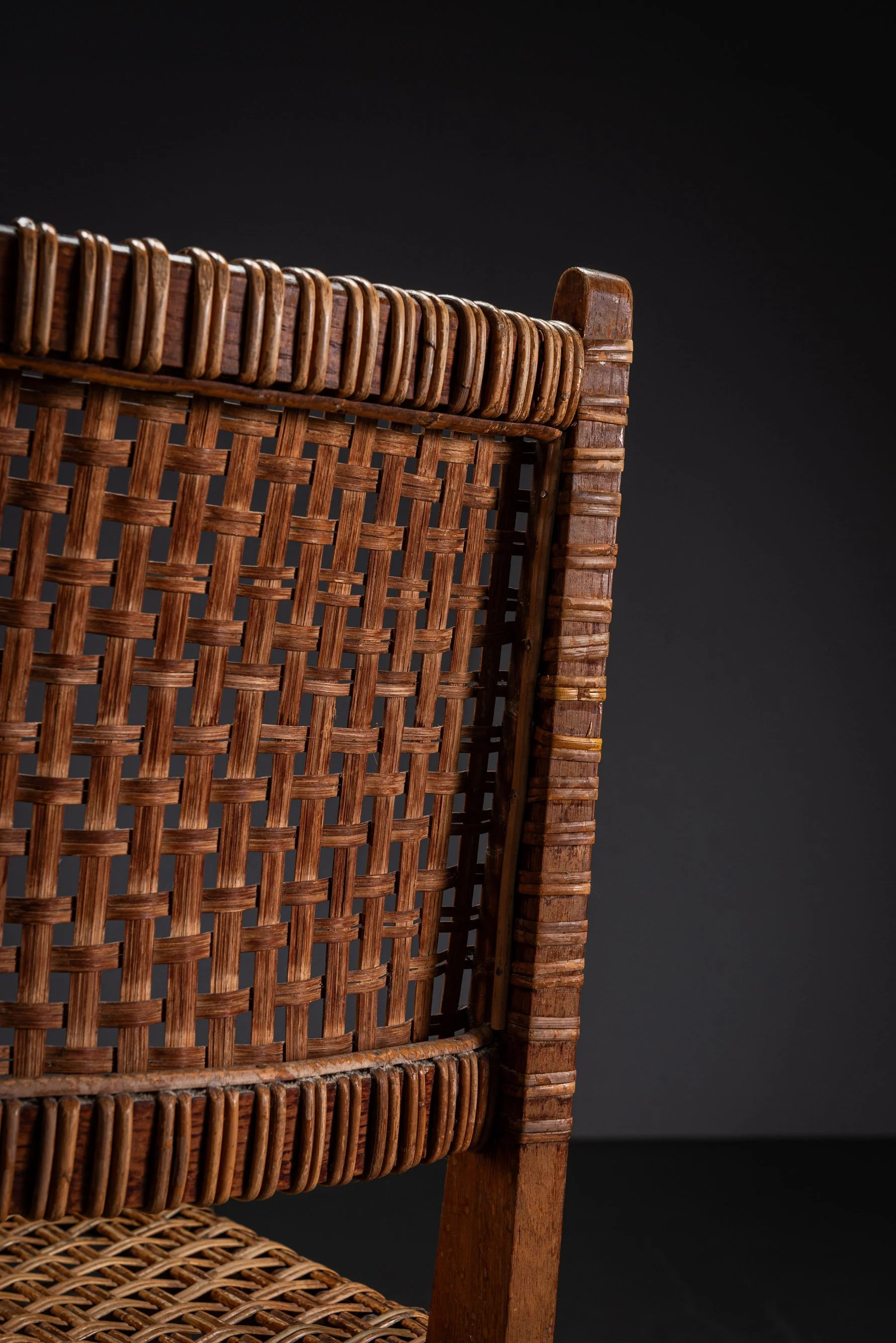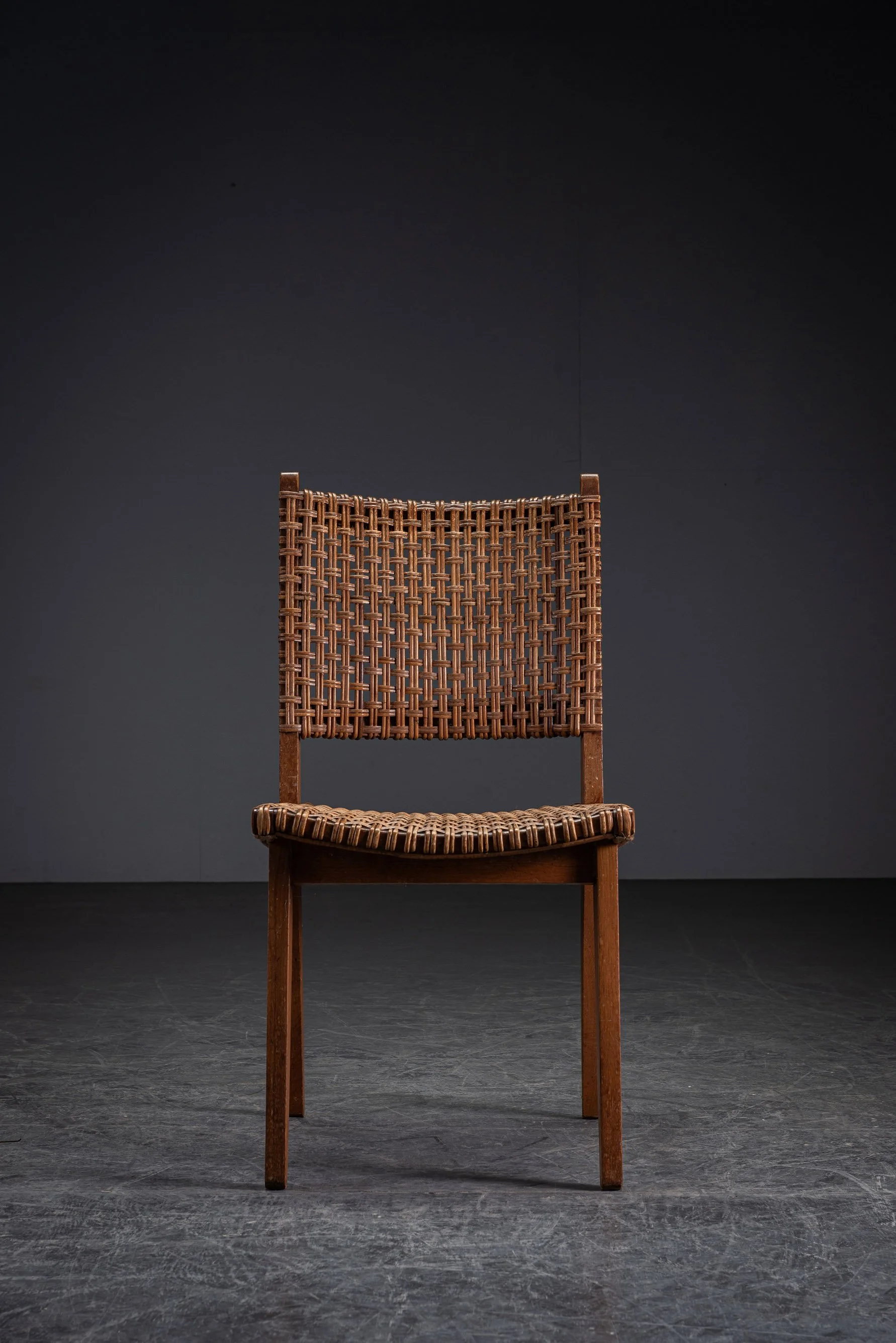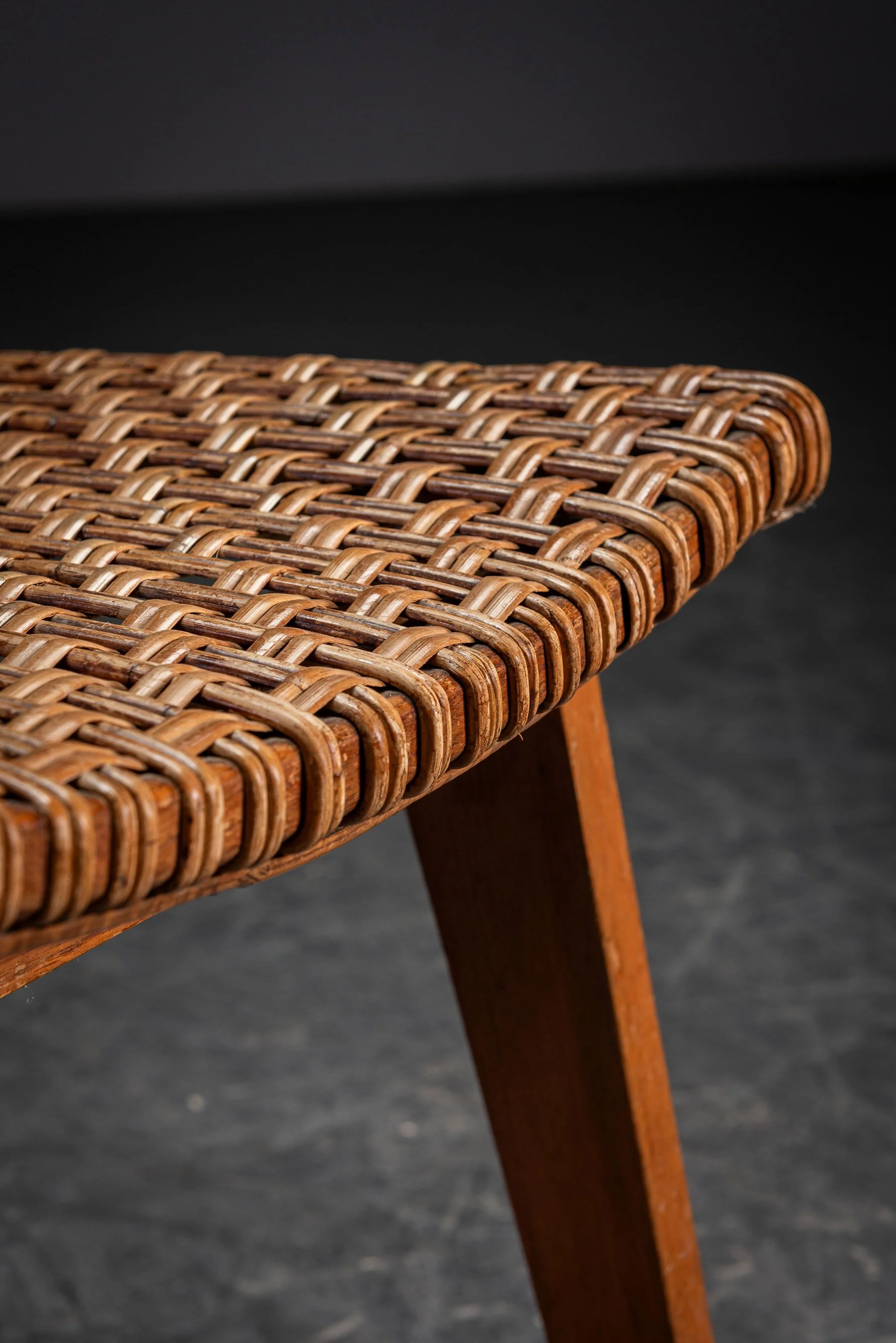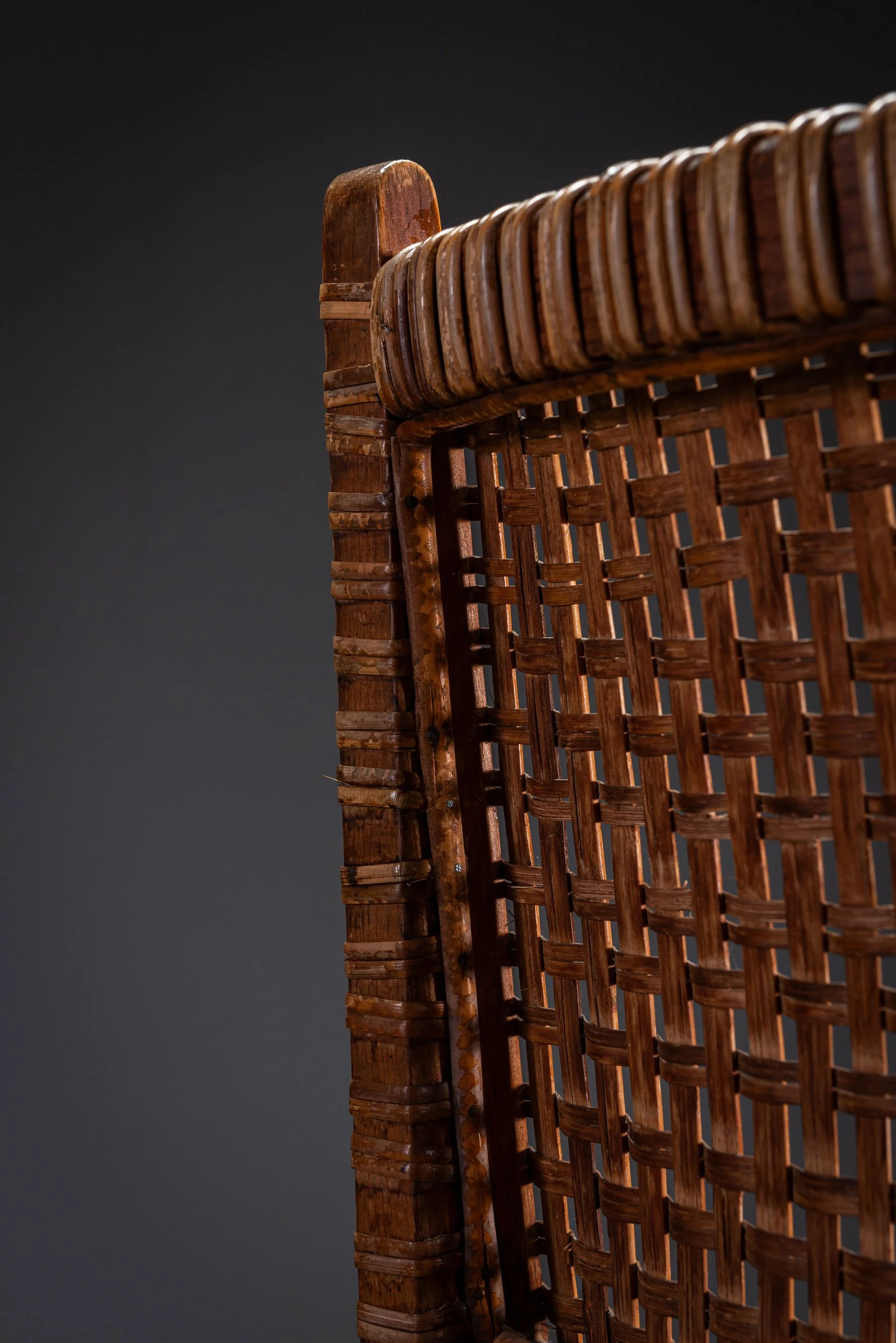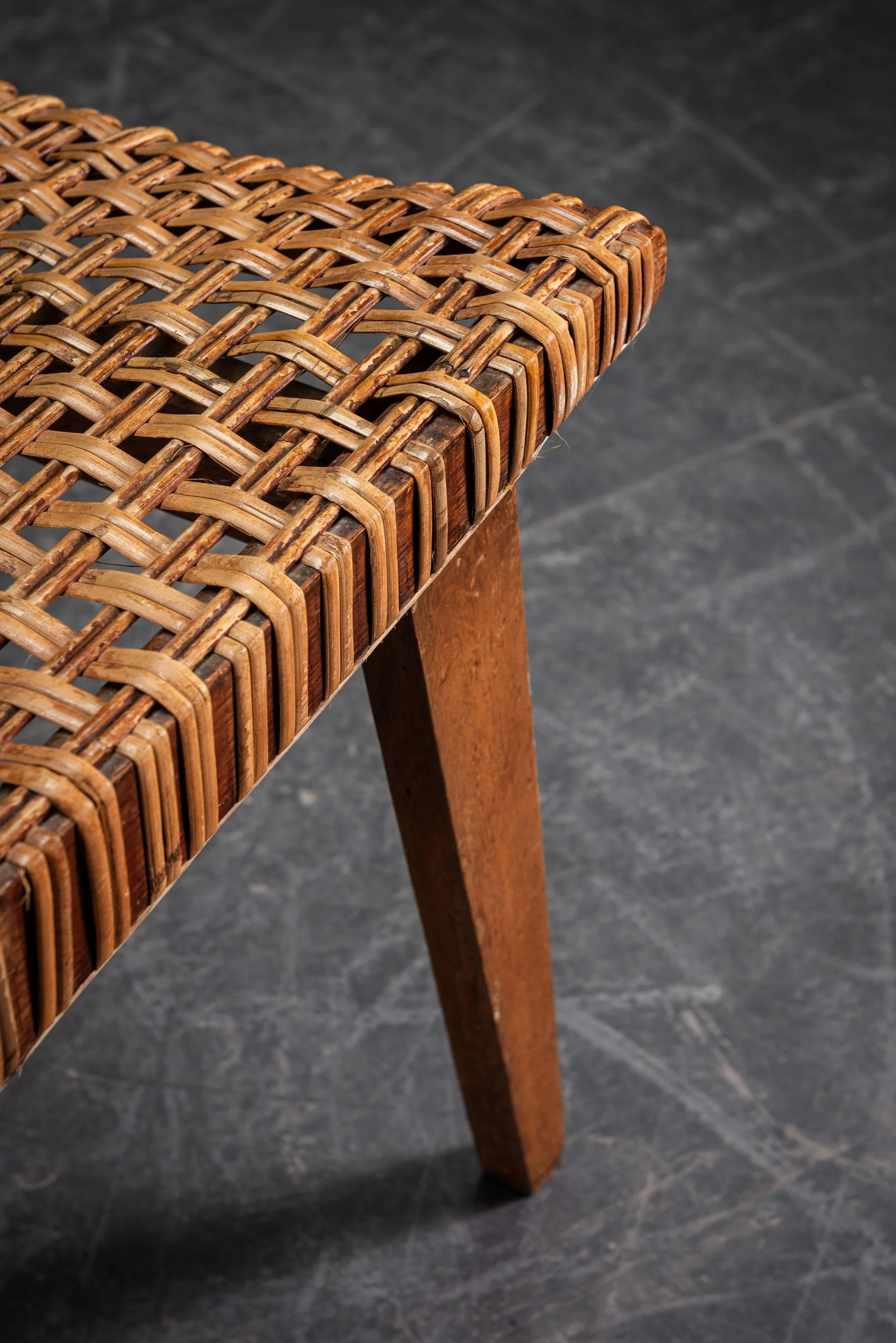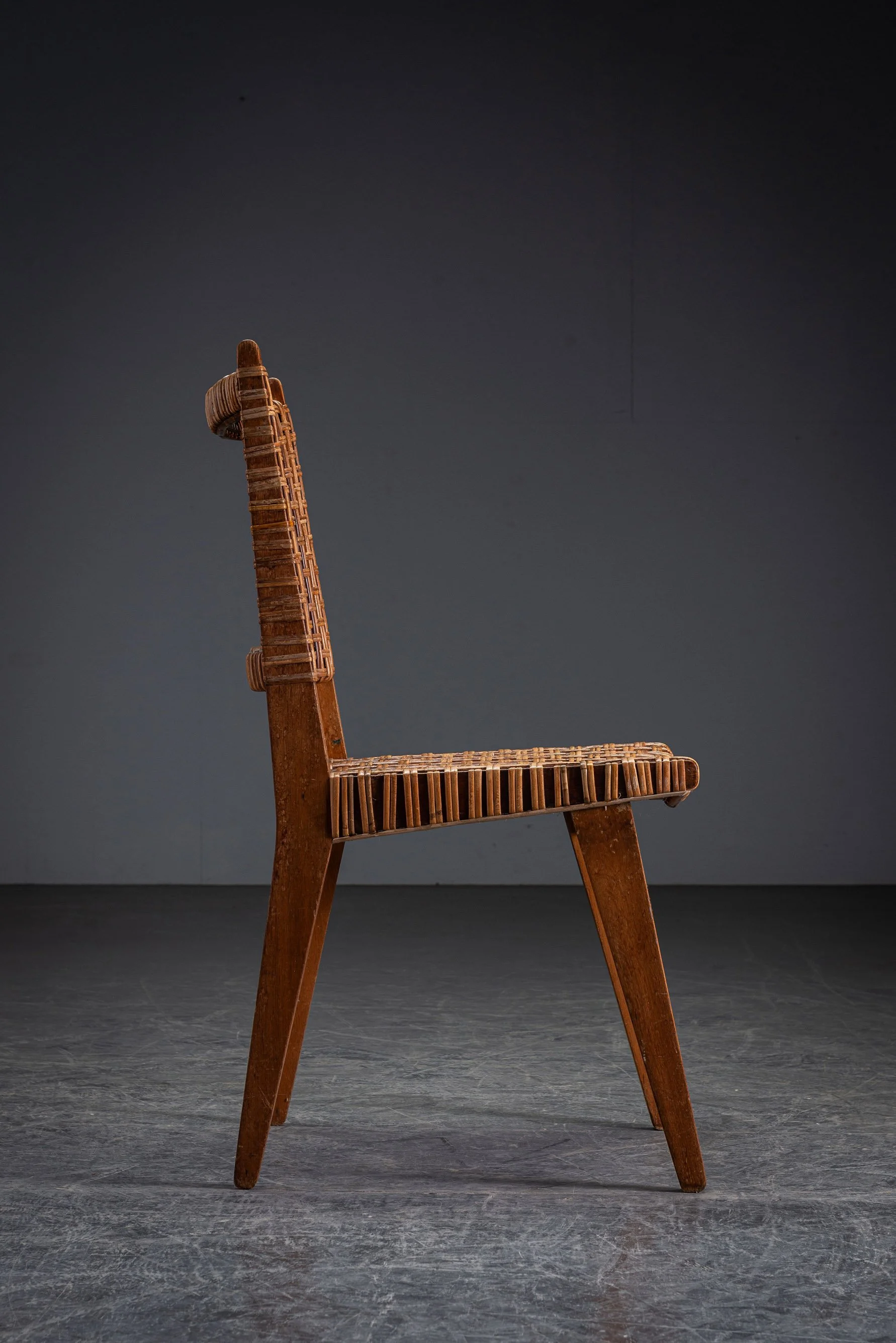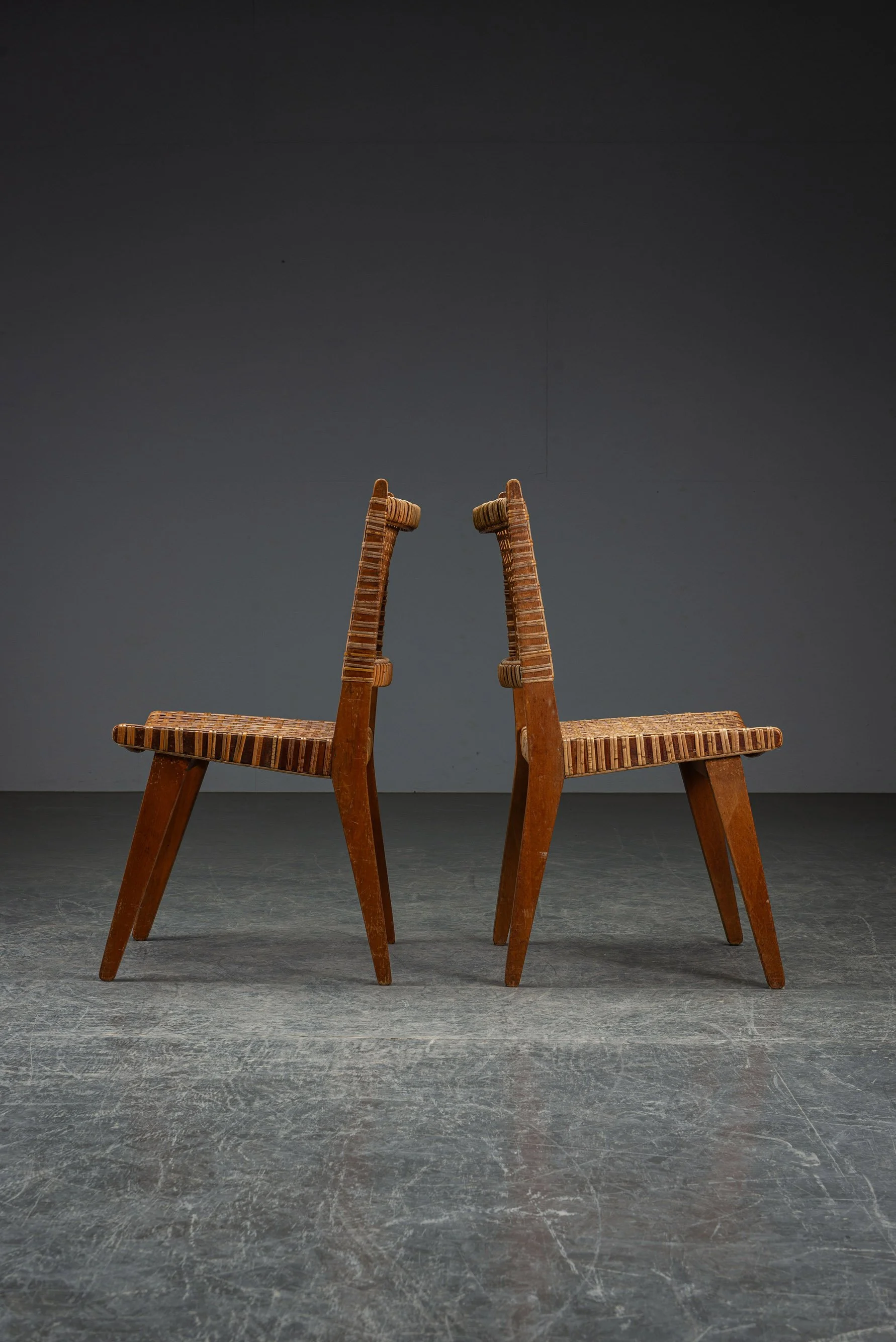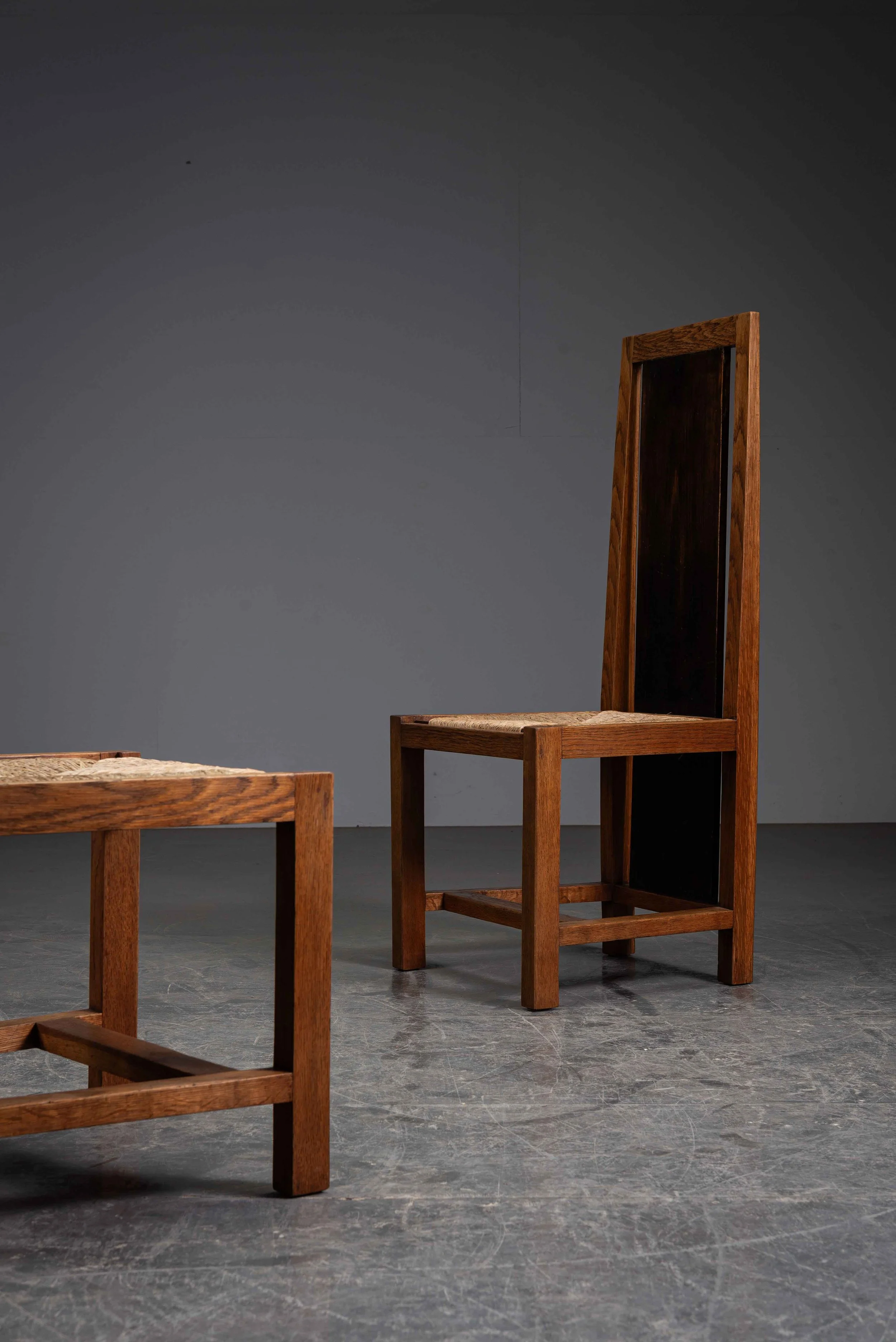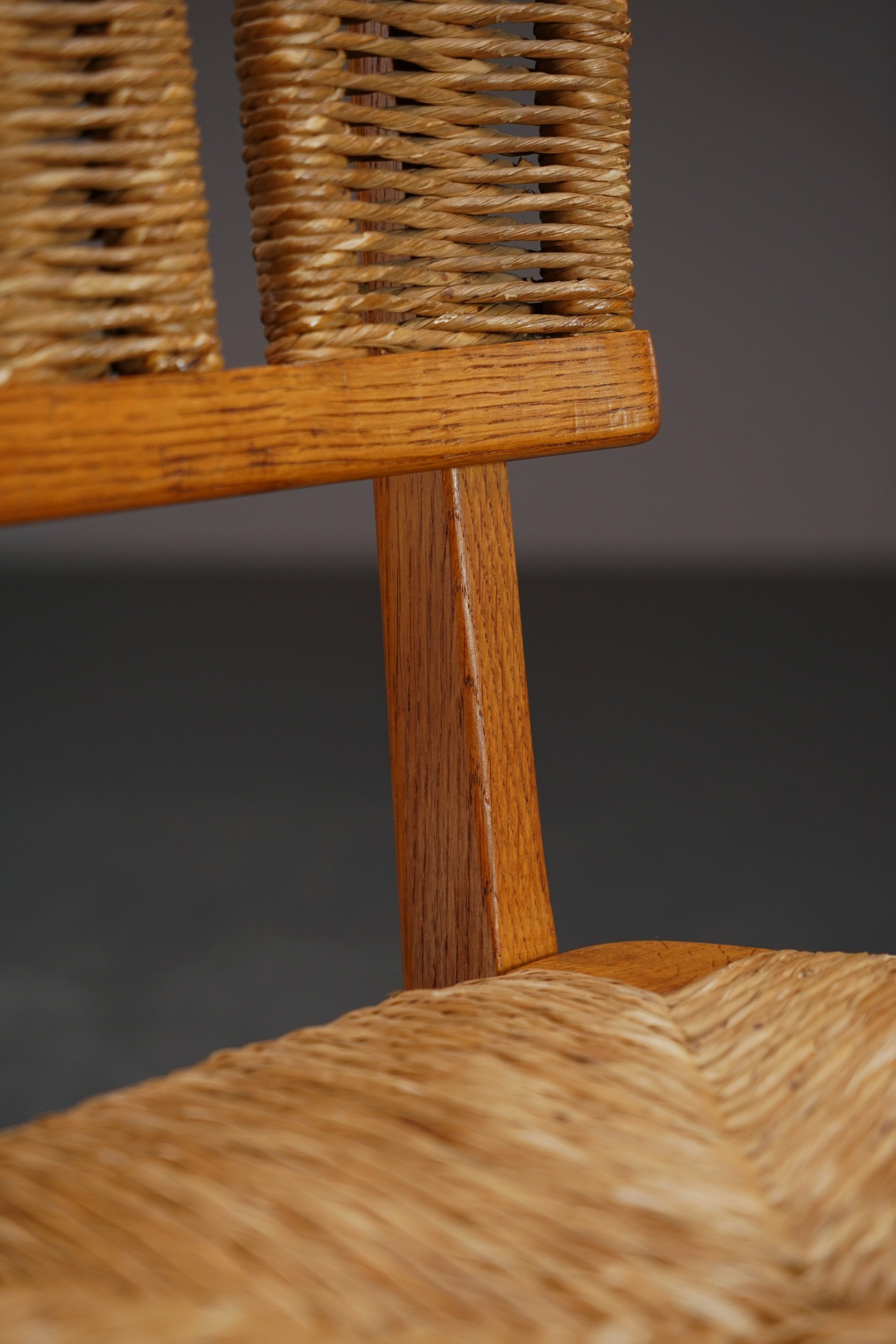 Image 1 of 17
Image 1 of 17

 Image 2 of 17
Image 2 of 17

 Image 3 of 17
Image 3 of 17

 Image 4 of 17
Image 4 of 17

 Image 5 of 17
Image 5 of 17

 Image 6 of 17
Image 6 of 17

 Image 7 of 17
Image 7 of 17

 Image 8 of 17
Image 8 of 17

 Image 9 of 17
Image 9 of 17

 Image 10 of 17
Image 10 of 17

 Image 11 of 17
Image 11 of 17

 Image 12 of 17
Image 12 of 17

 Image 13 of 17
Image 13 of 17

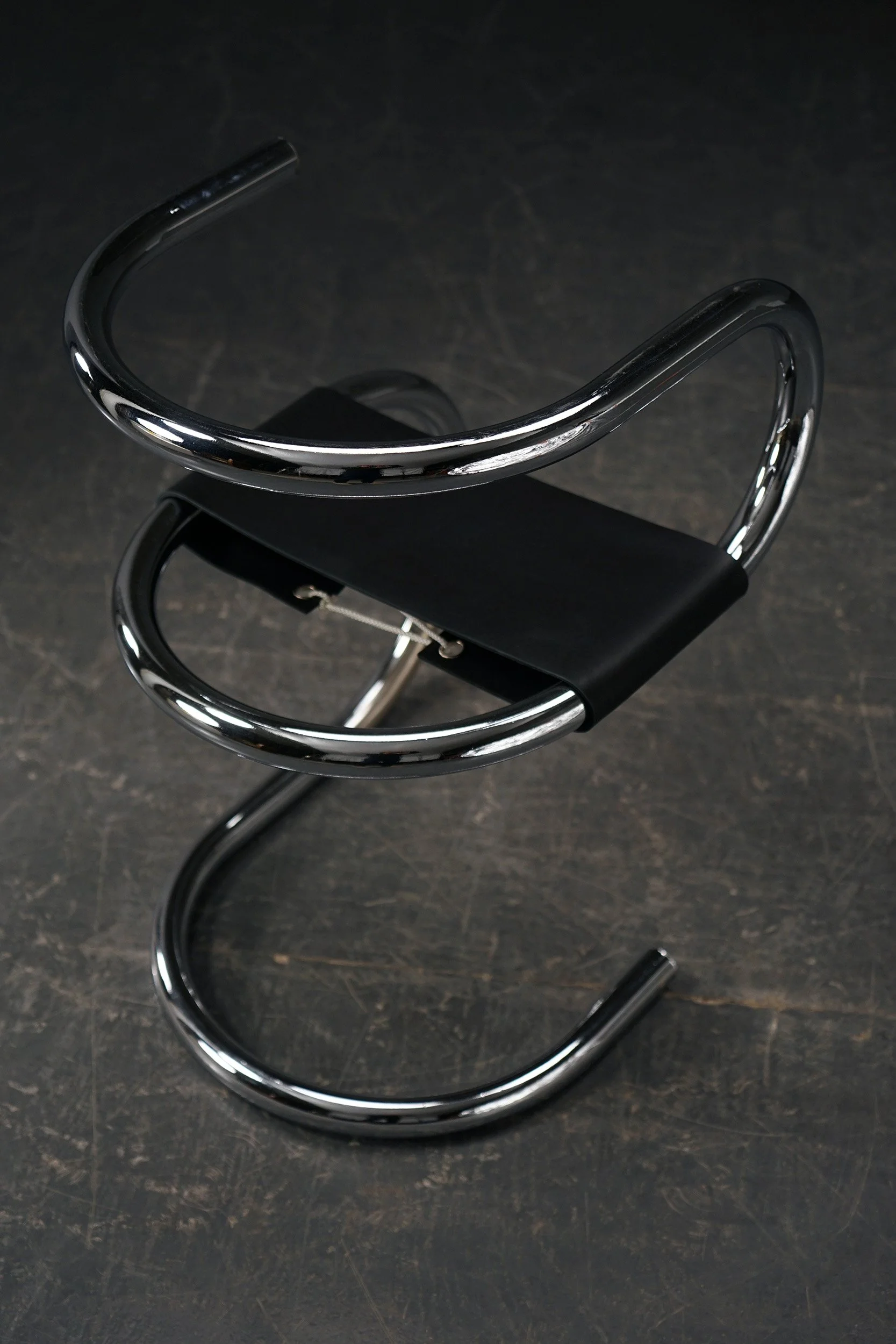 Image 14 of 17
Image 14 of 17

 Image 15 of 17
Image 15 of 17

 Image 16 of 17
Image 16 of 17

 Image 17 of 17
Image 17 of 17


















Modernist 'Mono-Tube Chairs' by Architect Wim van den Bergh
Em. Prof. Ir. Architect Wim van den Bergh (1955)
model: 'Mono-Tube Chair'
period: 1981
origin: The Netherlands
dimensions (cm): h72 x w48,5 x d52 cm (sh46,5 / ar72 cm)
dimensions (inch): h28,35 x w19,09 x d20,47 in (sh18,31 / ar28,35 in)
material: leather, metal
Acquired directly from the designer. Two chairs available. Price per piece.
Dutch architect Wim van den Bergh’s asymmetrical Mono-Tube Chair offers a radical revision of the iconic tubular steel chair designs of (a.o.) Marcel Breuer and Ludwig Mies van der Rohe in the 1920s. Only 30 were ever produced, of which the first prototype was commissioned by Museum Boijmans Van Beuningen in Rotterdam.
Rooted in the same logic as the early cantilever models, the Mono-Tube Chair pushes the principles of tubular steel design to the limit. It’s constructed from a single tube bent into one clear, flowing line, fully exploiting the material’s natural buoyancy and torsional strength. Bending and spiralling forces are evenly distributed throughout the structure. The result is a seat that reconciles visual lightness with mechanical solidity, balancing stability and the sensation of suspension in one sweeping gesture.
In fact, the Mono-Tube Chair may visually be more akin to Thonet’s graceful bentwood tradition, while remaining firmly grounded in modernist engineering. This chair is a case where form follows force. What appears precarious is, in use, perfectly composed—almost defying gravity.
Em. Prof. Ir. Architect Wim van den Bergh (1955)
model: 'Mono-Tube Chair'
period: 1981
origin: The Netherlands
dimensions (cm): h72 x w48,5 x d52 cm (sh46,5 / ar72 cm)
dimensions (inch): h28,35 x w19,09 x d20,47 in (sh18,31 / ar28,35 in)
material: leather, metal
Acquired directly from the designer. Two chairs available. Price per piece.
Dutch architect Wim van den Bergh’s asymmetrical Mono-Tube Chair offers a radical revision of the iconic tubular steel chair designs of (a.o.) Marcel Breuer and Ludwig Mies van der Rohe in the 1920s. Only 30 were ever produced, of which the first prototype was commissioned by Museum Boijmans Van Beuningen in Rotterdam.
Rooted in the same logic as the early cantilever models, the Mono-Tube Chair pushes the principles of tubular steel design to the limit. It’s constructed from a single tube bent into one clear, flowing line, fully exploiting the material’s natural buoyancy and torsional strength. Bending and spiralling forces are evenly distributed throughout the structure. The result is a seat that reconciles visual lightness with mechanical solidity, balancing stability and the sensation of suspension in one sweeping gesture.
In fact, the Mono-Tube Chair may visually be more akin to Thonet’s graceful bentwood tradition, while remaining firmly grounded in modernist engineering. This chair is a case where form follows force. What appears precarious is, in use, perfectly composed—almost defying gravity.
































